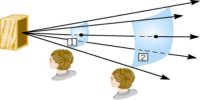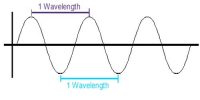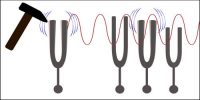Transverse wave: When the particles of the medium vibrate about their mean positions perpendicular to the direction of propagation, then the wave is called the transverse wave. It is a wave vibrating at right angles to the direction of its propagation.
A transverse wave is a wave in which particles of the medium move in a direction at right angles to the way that the wave moves. These waves are constantly characterized by particle motion being perpendicular to wave motion. Examples of transverse waves include vibrations on a string and ripples on the surface of the water. We can make a horizontal transverse wave by moving the slinky perpendicularly up and down.
All electromagnetic waves; Radio, Microwave, Infra-Red, Visible Light, Ultra Violet, x-rays and gamma rays.
Explanation: In Figure, a transverse wave is shown. The particles of the medium in a transverse wave, move up and down and the wave travels in a horizontal direction. Small arrows on this wave represent the directions of motion of the different particles at any instant.
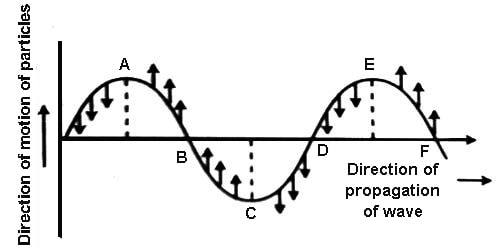
The points at A and E in the upper part of the wave show maximum displacement of particles. These points are called crests. Point C represents the maximum displacement of particles in the negative direction which is called trough. A transverse wave progresses as a series of crests and troughs.
Here, the directions of motion of particles are perpendicular to the direction of propagation of a wave, hence it is a transverse wave.
Examples:
(1) When a stone is thrown on the water of a pond, it is seen that water particles oscillate up and down and this oscillation proceeds towards the edge of the pond. The wave produced in this type is called the transverse wave.
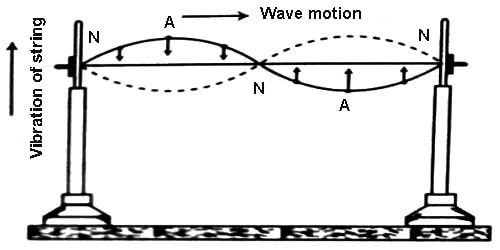
(2) A stretched string fixed at both ends is pulled perpendicular to its length and is released, a wave is produced in the string [Figure 2]. It is observed that the particles in the string oscillate perpendicular to the direction of motion of the wave.
So, the wave produced in a stretched string is a transverse wave.
Characteristics: Characteristic of a transverse wave is that the motion of the element is perpendicular to the motion of the wave.
- The particles more perpendicular to the wave motion, the particles of the medium are perpendicular to the surface in transverse waves.
- It can propagate and only produced in liquid and solids but not in gases
- They consist of and travel in the form of crest and trough.
- They can be polarized. Transverse waves create a short lasting effect, i.e., remains active for a shorter period of time and longitudinal waves have a long-lasting effect.
Properties: A transverse wave has all the properties of mechanical waves.
- Amplitude – The utmost perpendicular disarticulation of the medium particles on either side of its symmetry situation is called the amplitude.
- Time period – The time taken by a medium particle in implementation one oscillation is called as the time period of the wave.
- Frequency – The number of oscillations made by a medium particle in 1 second is called as the incidence of the wave.
- Phase – The phase of the wave at any immediate denotes the situation and way of motion of medium element at that time.
- Wavelength – The distance traveled by the wave in one absolute oscillation.

